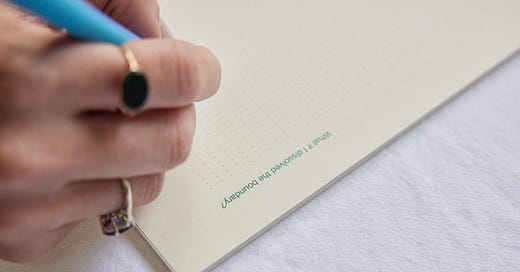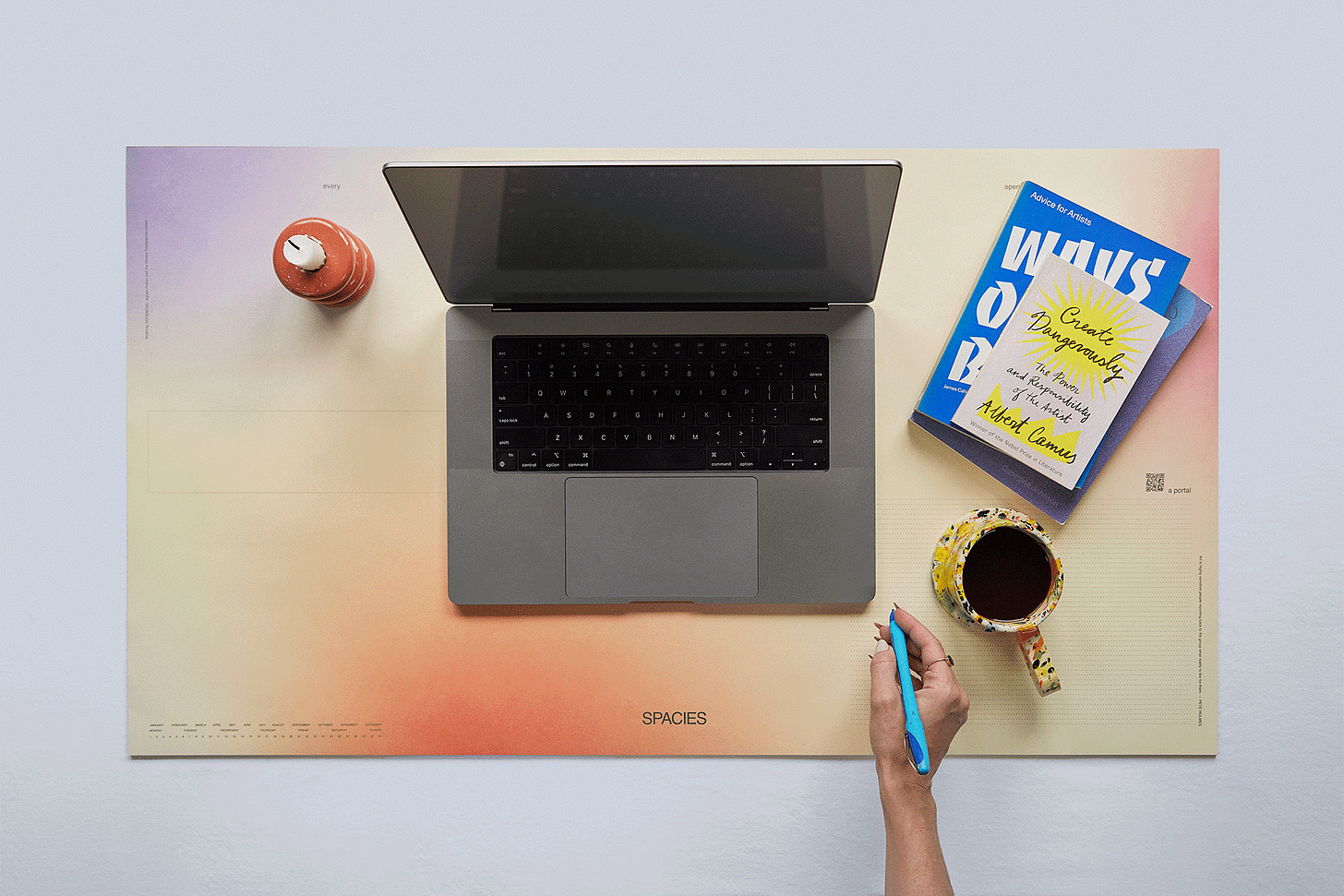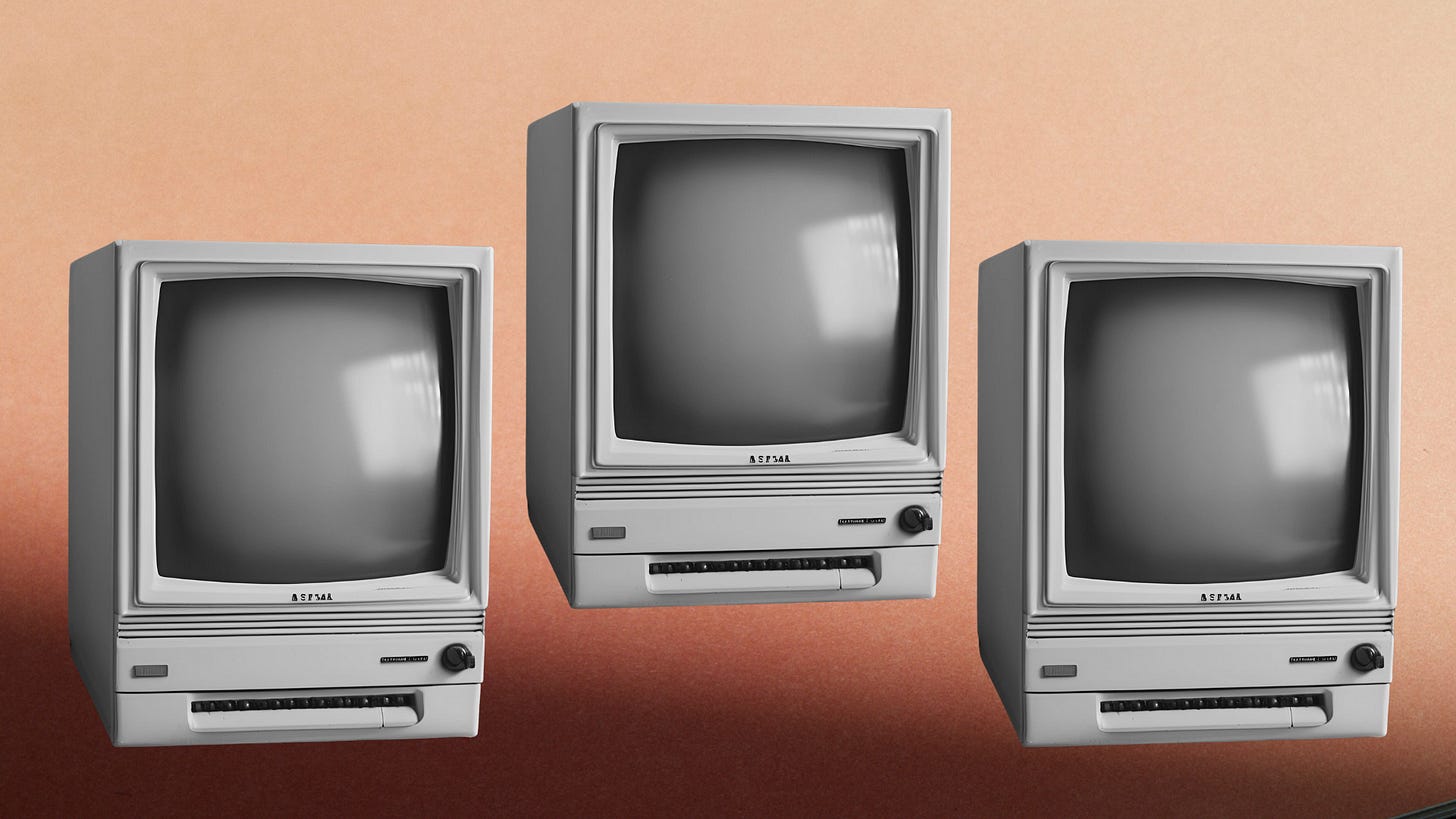ICYMI, we launched the SPACIES Desk Pad last week. We've been stunned by the positive response — we sold through 40% of our stock in four days! Just know that we're bouncing up and down with glee every time we see a new order come through, and we're so grateful for your support.
Now, let's talk about chance as a divergent strategy.
Chance (see also: synchronicity, faith, deep noticing, logical chaos, absent presence) often gets relegated to the realms of the childish unsophistication.
"Close your eyes and pick a card."
"A butterfly flew into my studio today, that must mean something..."
"What do you see in that cloud?"
It's easy to write off chance as an unintentional, haphazard, unconsidered tactic only stupid, unserious people would dream of actually using.
(Ed. Note: For the record, my enduring life goal is to become an even more stupid, unserious person.)
In reality, chance has been the channel of choice for some of our most prolific, visionary, disciplined, grounded artists.
David Bowie, Agnes Martin, Brian Eno, Yayoi Kasama, Ellsworth Kelly, Margaret Atwood, Chantal Akerman, David Lynch, Terrence Malick — all employ chance at some stage of their work.
And in a world where our digital opportunities to experience chance are rapidly dwindling because of web crawling AI and overly engineered algorithms, it'd probably do us some good to develop a chance or synchronicity practice for ourselves.
Remember there are four creative archetype scales (aka the SPACIES scales):
Mutable to Concrete, Ordinary World to Special World, Failure Tolerant to Perfectionist, and Mental to Spatial.
Plotting yourself on these each of these spectrums helps you understand your creative preferences.
THE 16 CREATIVE ARCHETYPES, DECODED
The four SPACIES Scales spit out 16 potential creative archetypes.
And it might sound so very like, doiiiii, but because every person has a different artistic genetic makeup, there's not really a one-size-fits-all step-by-step process to accessing an individual's innate supernatural creativity.
BUT, we can probably say that a more generalized tactic — say, the concept of chance — is a reliable divergent strategy to employ no matter where you fall on the SPACIES scales. It's just gonna look different in practice depending on the individual.
It felt extremely important to add moments of chance into the product design of the SPACIES Desk Pad.
Little rocks of ideas that you could keep walking by, or crouch down and gently turn over to see what's underneath.
"Is it possible to manufacture moments of synchronicity?"
The last thing we wanted to do was be prescriptive or pedantic. To keep ourselves honest, we investigated some of our true-blue chance tools:
Oblique Strategies by Brian Eno
A deck of cards created by Brian Eno and Peter Schmidt, Oblique Strategies is full of cryptic, provocative phrases designed to help artists overcome creative blocks by introducing an element of randomness and new perspectives. By drawing a card, users are encouraged to interpret the suggestion and apply it to their creative process, allowing chance to guide their decisions and spark inspiration.
Pulling a Tarot Card
Same same, but different. While Oblique Strategies might command you to "do it 10x slower," a tarot card has an even more abstract chance impact on your process. The symbolism of the card might spark a thought that inspires a new way of reflecting on your situation. Or maybe you see the two on your 2 of Cups, which reminds you of the Mary Kate and Ashley Olsen movie, "It Takes Two," which makes you think of the twins' fashion line The Row, which inspires an essay on ~sophistication~
Early internet tools
Early internet tools, like search engines or random generators, were often used as a digital equivalent of the Magic 8 Ball. These simplistic tools allowed users to input a question or topic and receive a surprising or unexpected result, introducing an element of chance into decision-making or exploration. Ah, simpler times. Rest In Power, Stumbleupon.
Research rabbit holing
My personal kink is following a series of links or ideas online, allowing chance discoveries and serendipitous hyperlinked connections to guide my journey. Starting with a single search or topic, this method embraces the unpredictability of the internet to uncover new and often unrelated information, leading to a deeper and more varied understanding of a subject. Admittedly, this is harder and harder to do in a world controlled by algorithms that censor a lot of content without our consent.
All of these strategies inspired the 90 individual "departure points" on the SPACIES Desk Pad.
Various prompts, quotes, ideas, and links are sprinkled unobtrusively throughout the pad. Ignore them if you want, or turn to them when you crave a spark of chance in your daily practice.
We honestly have no idea where they'll lead you. And that's kind of the point.













